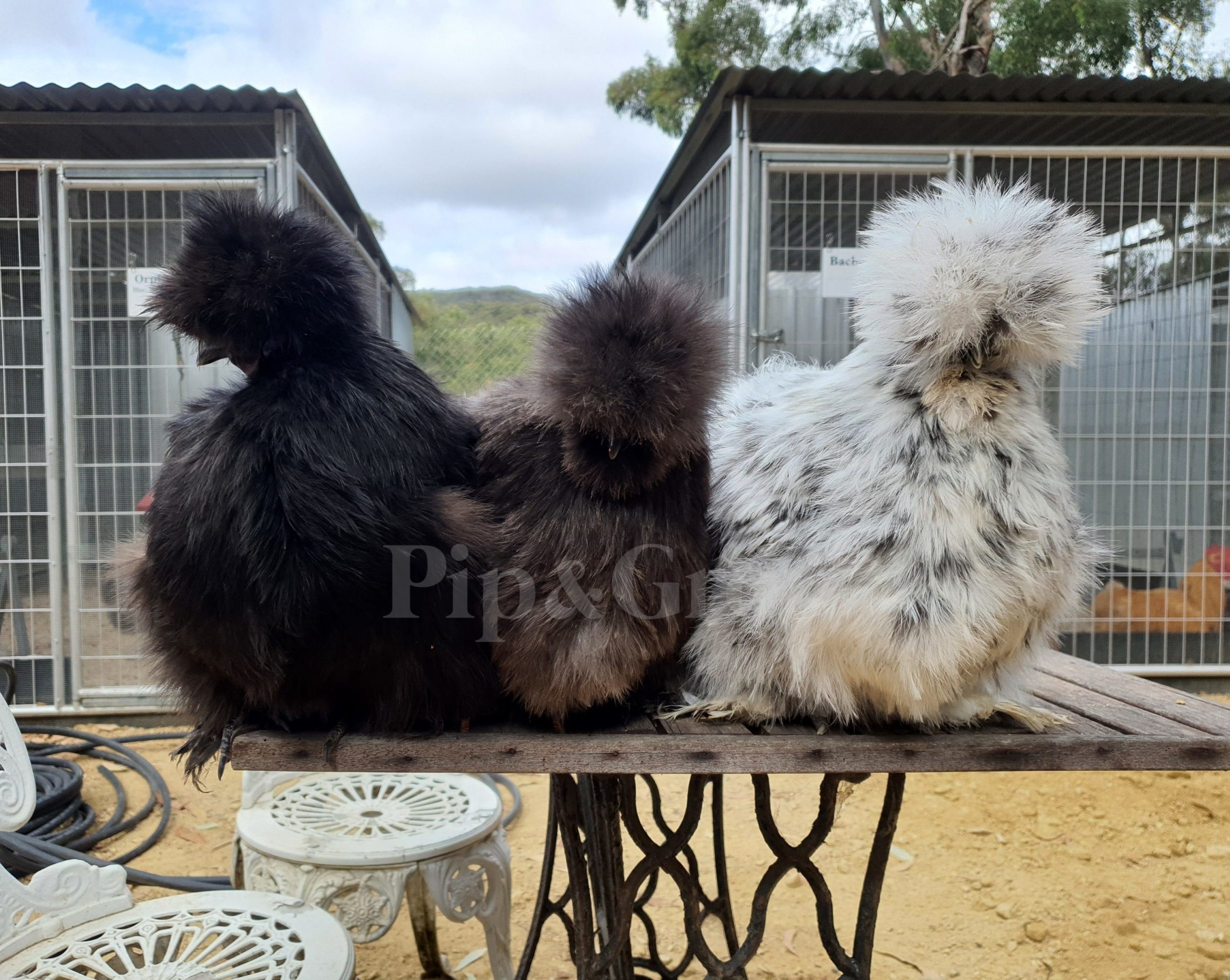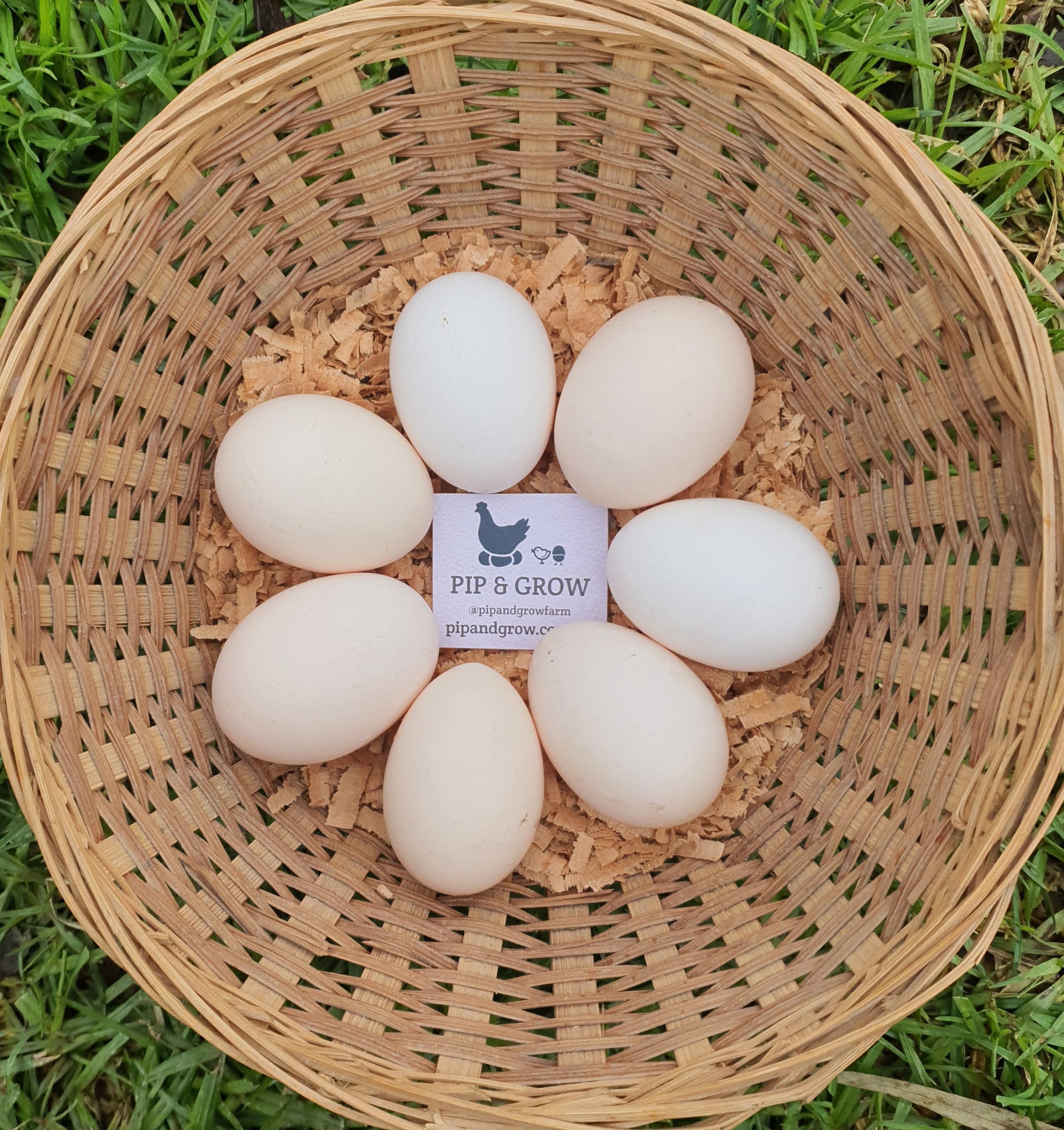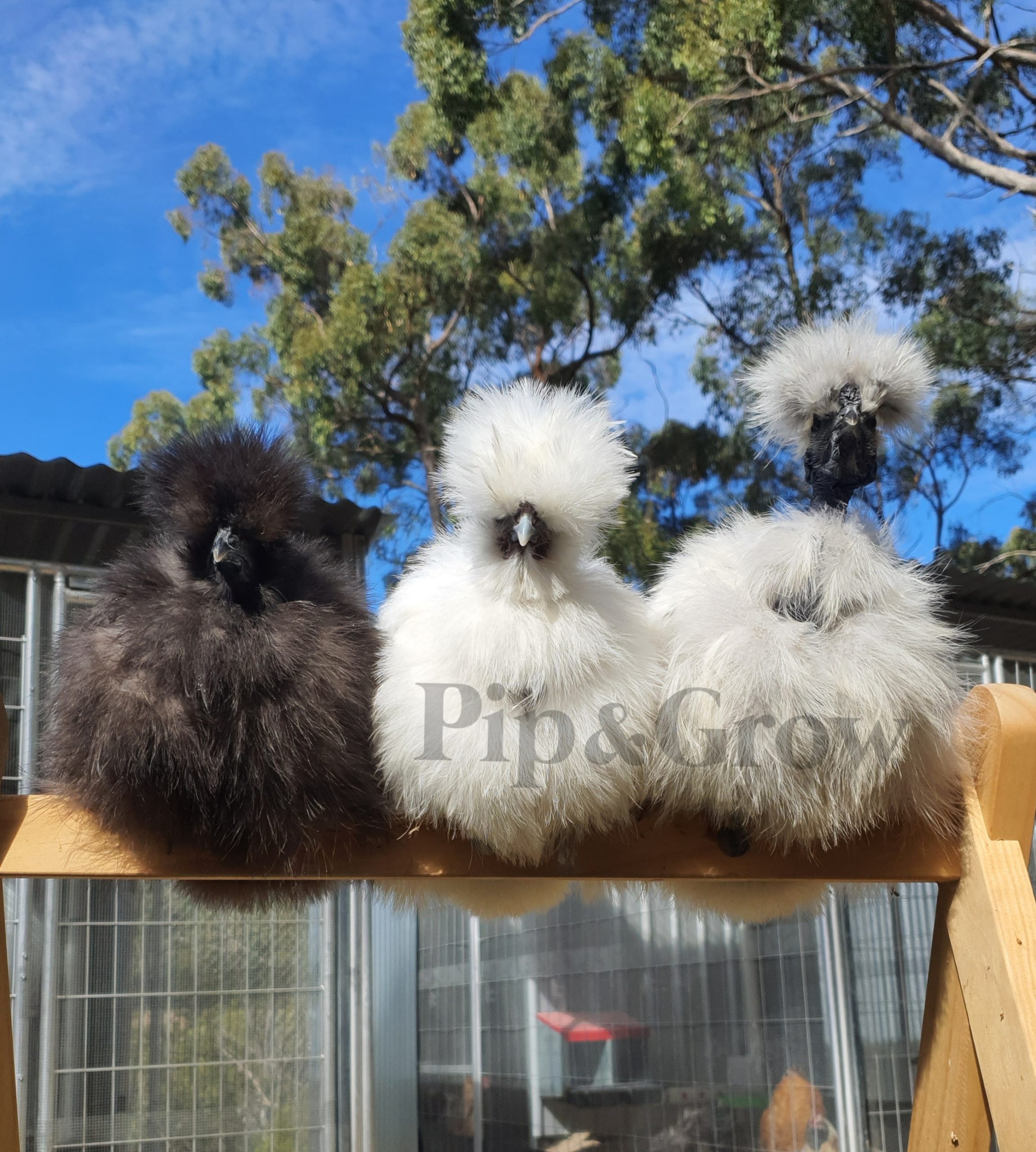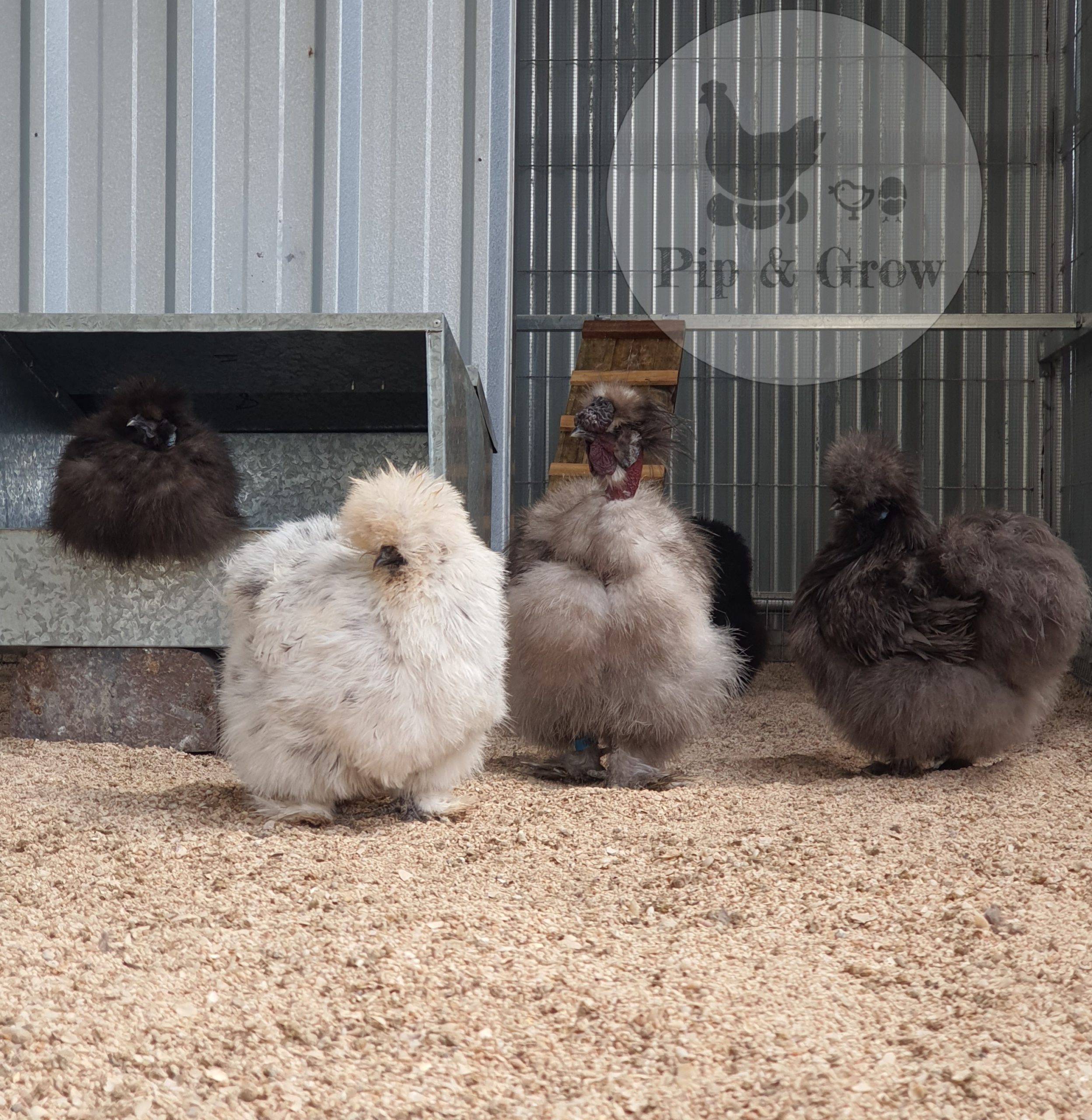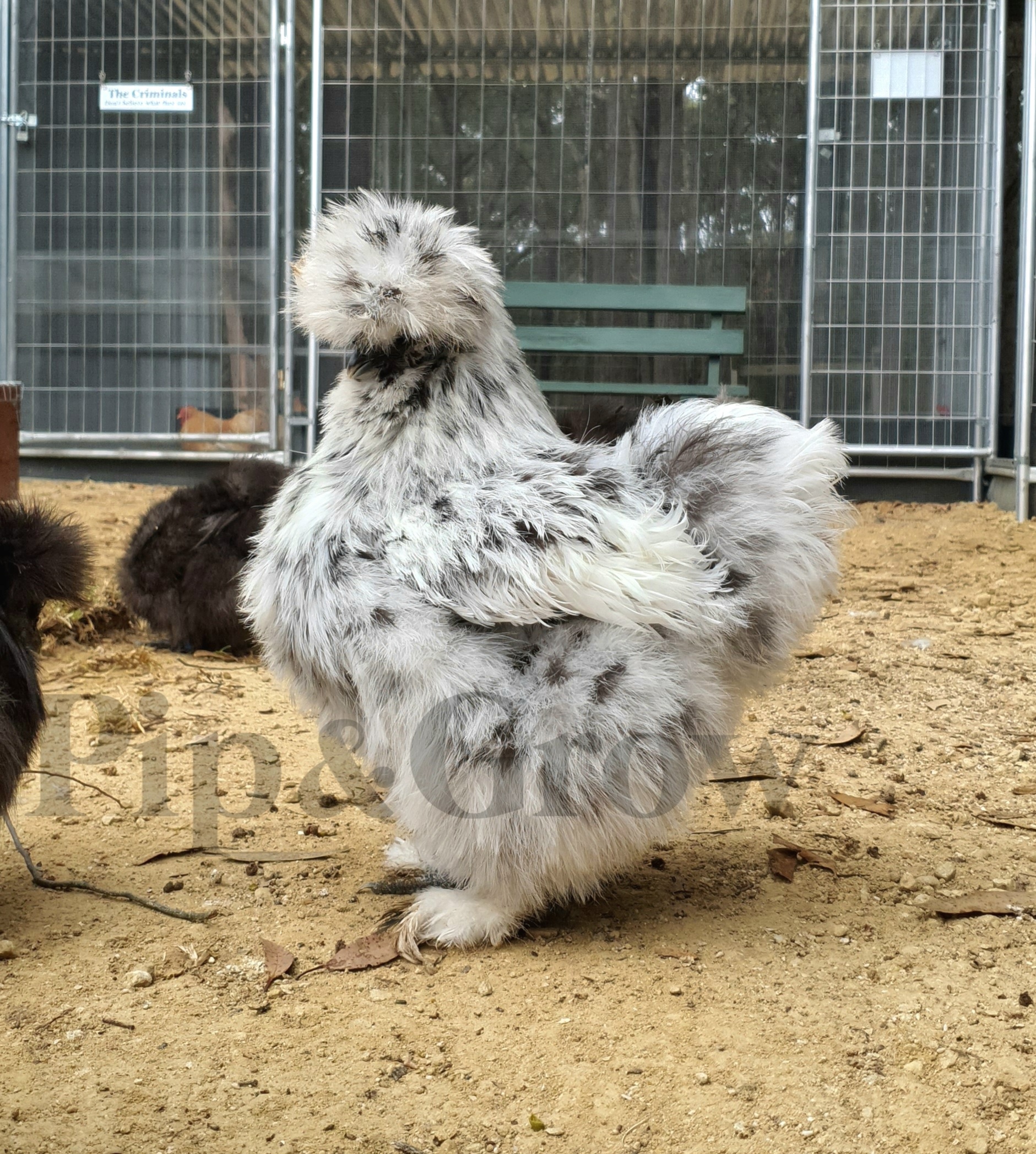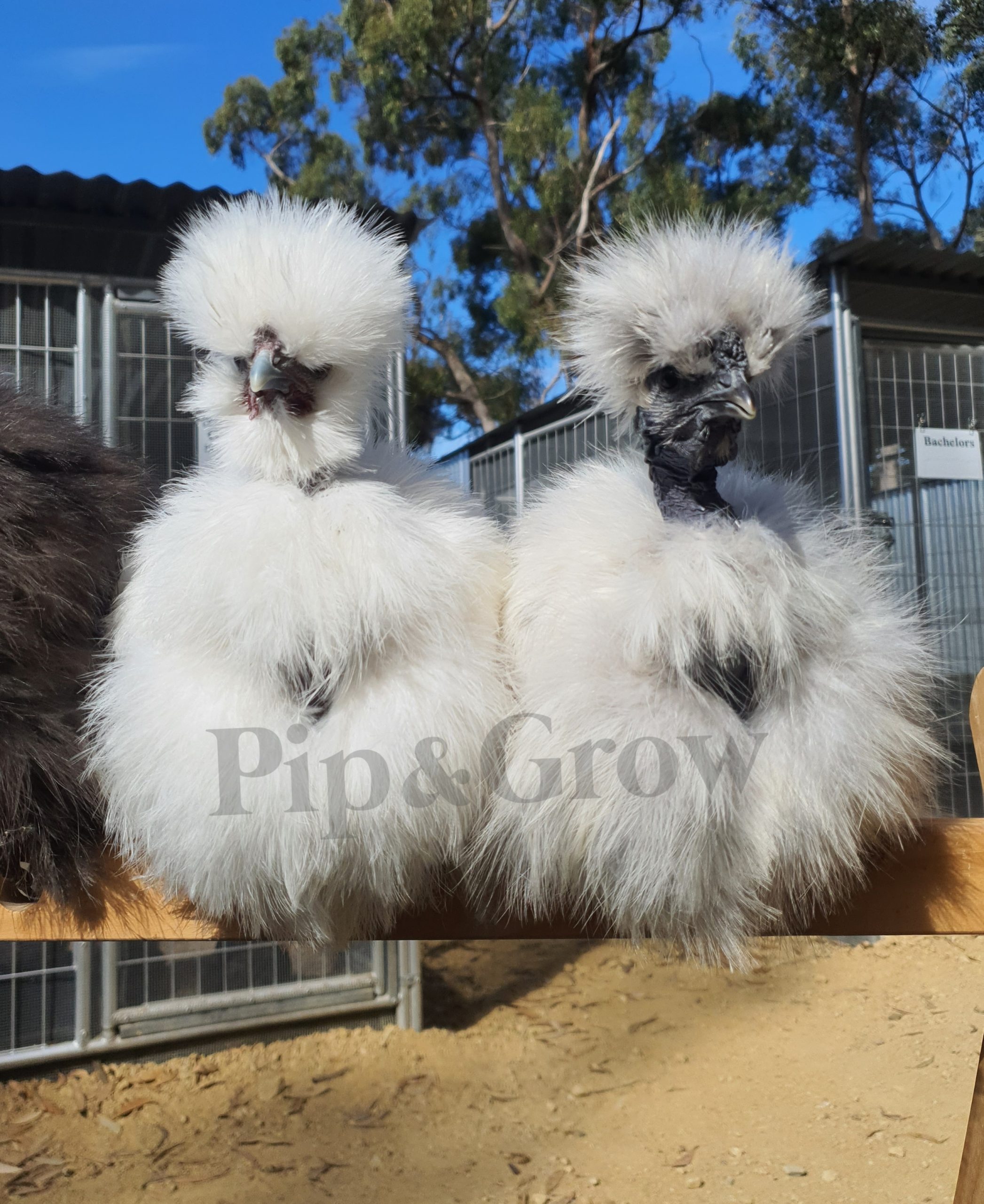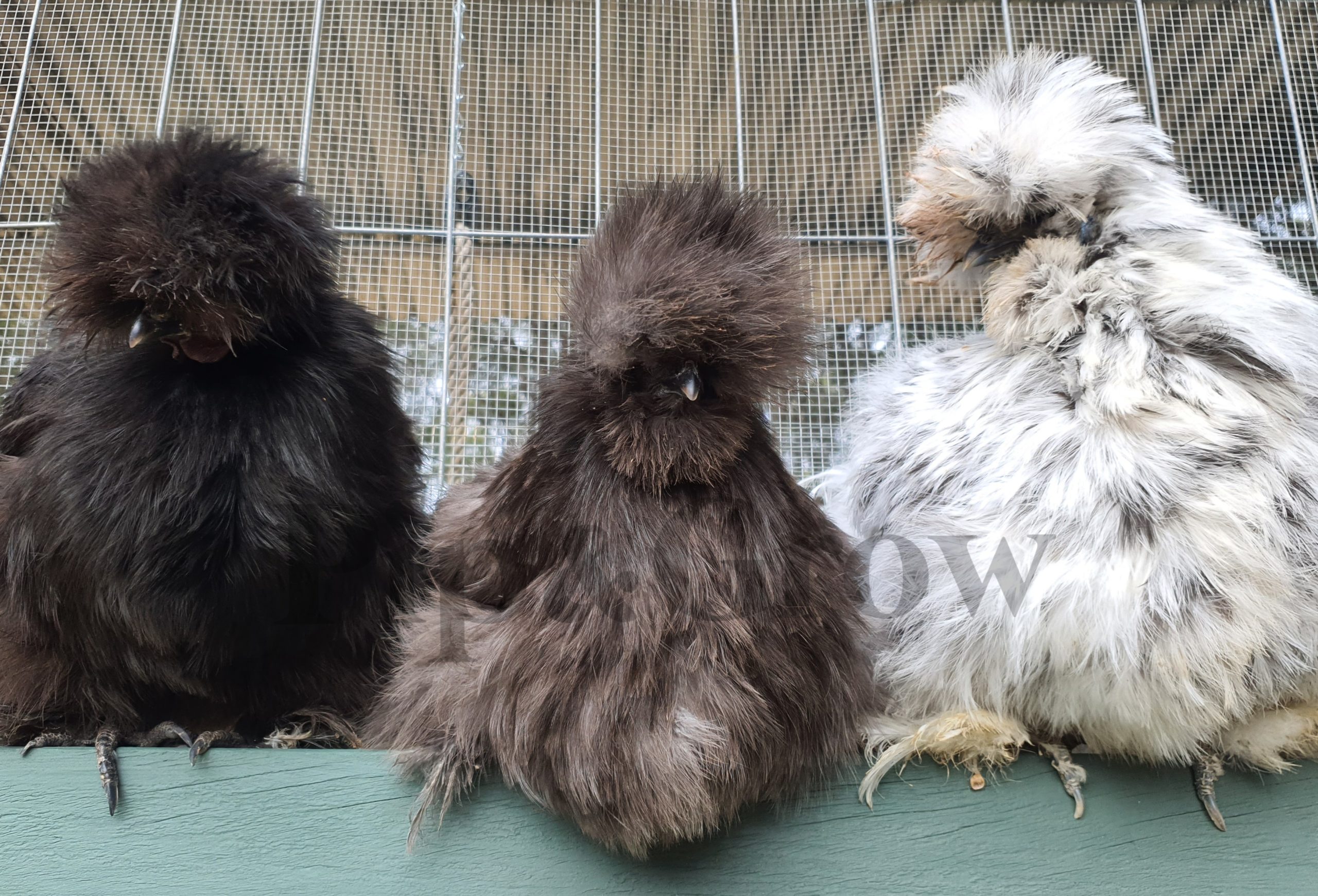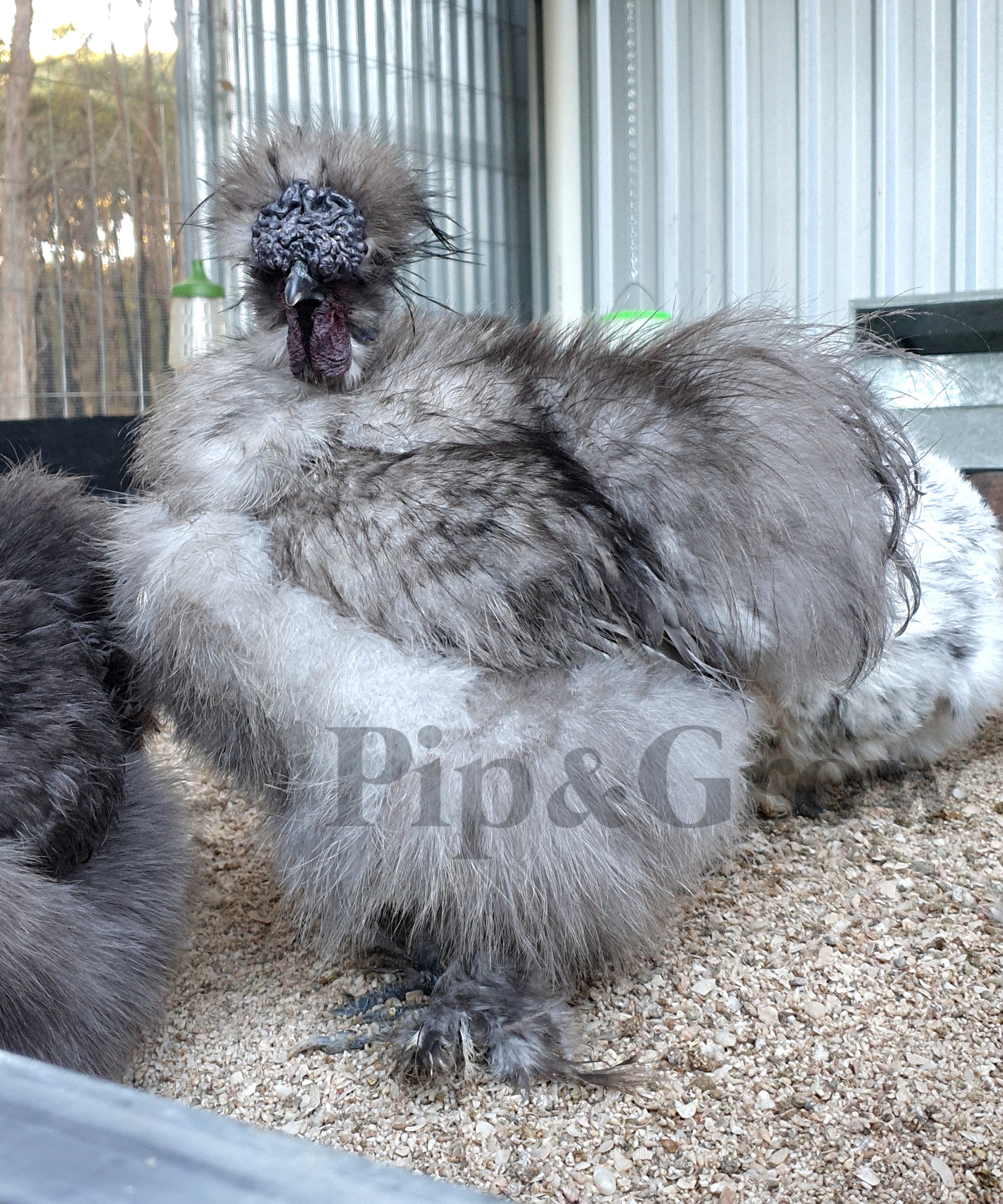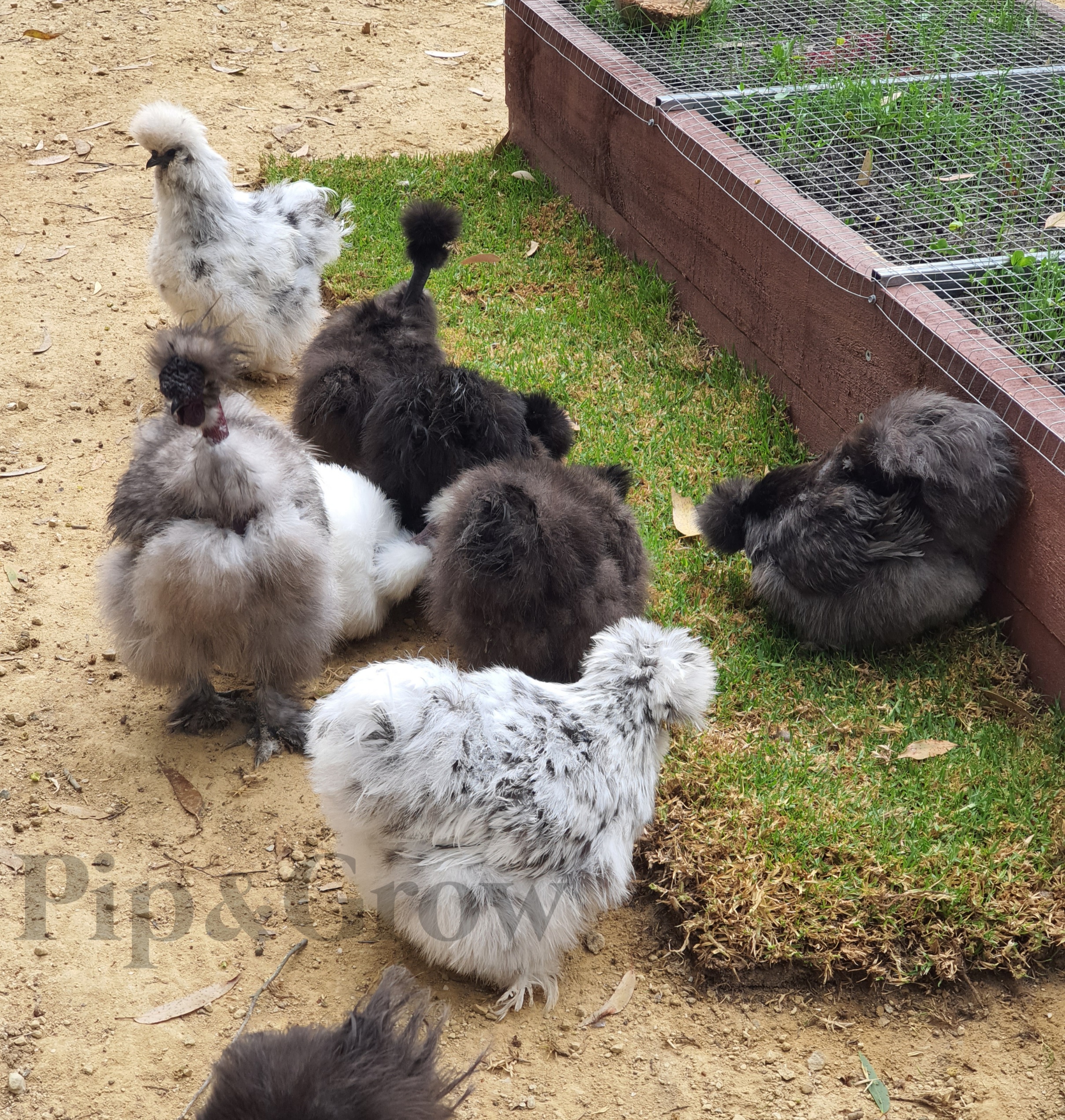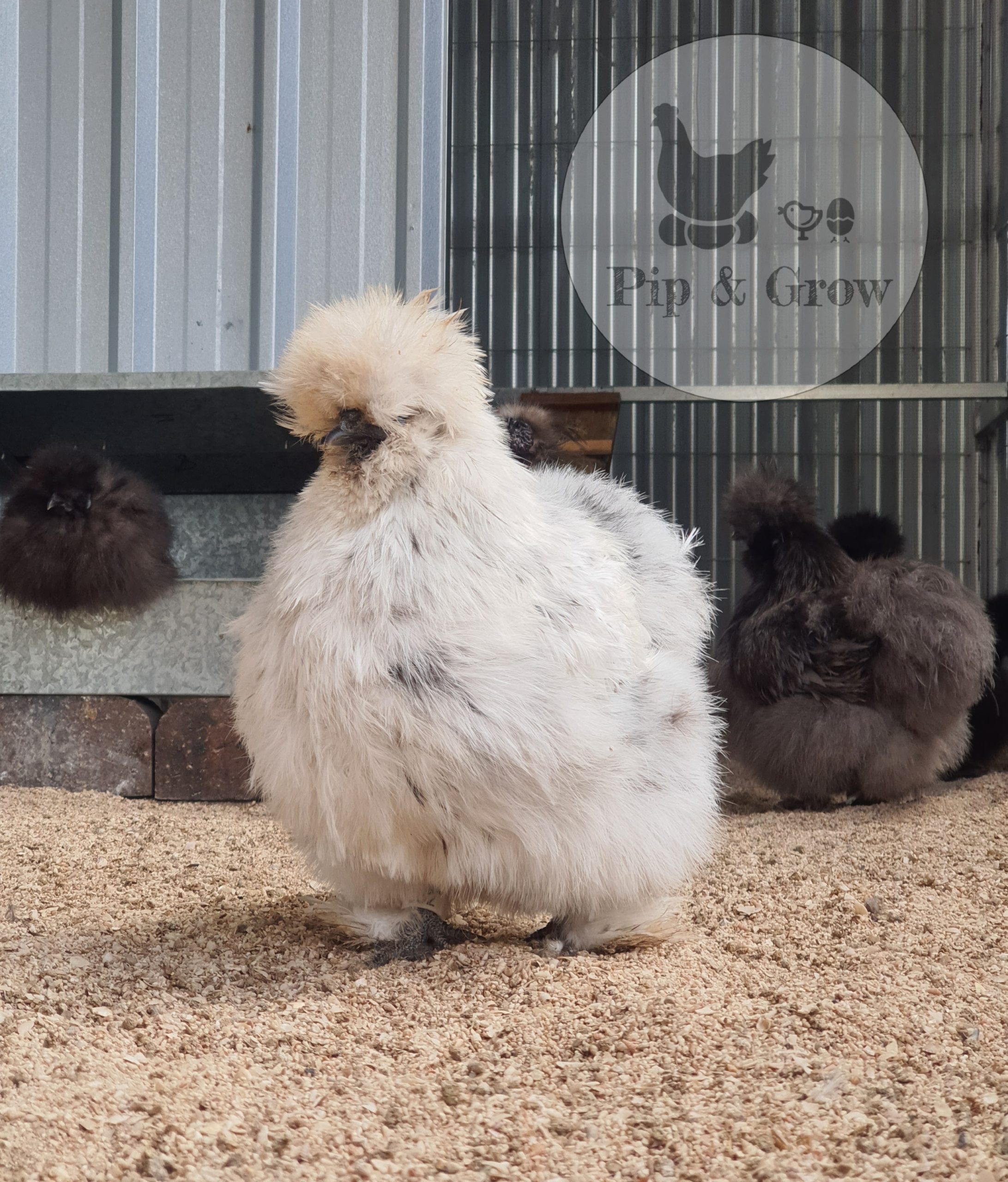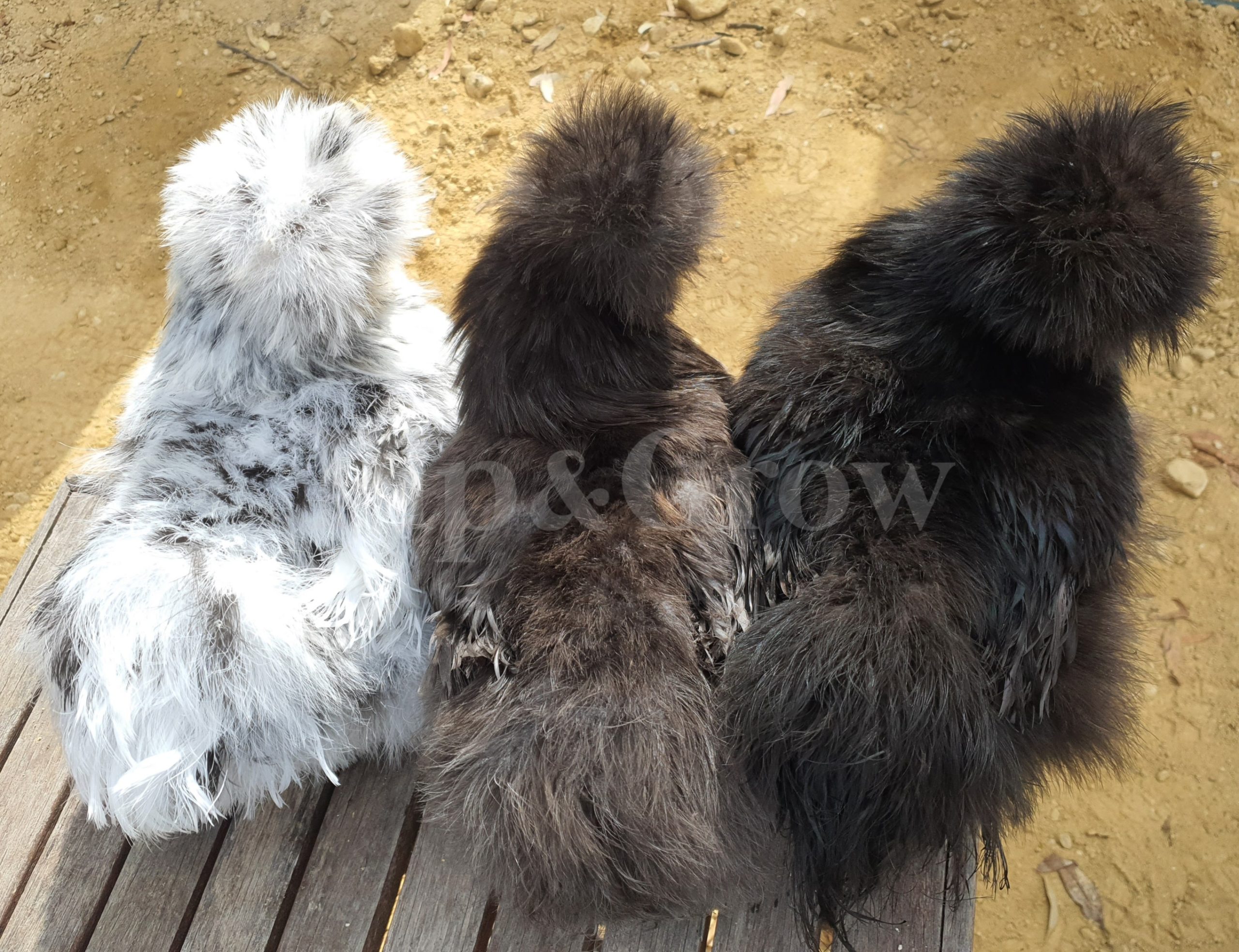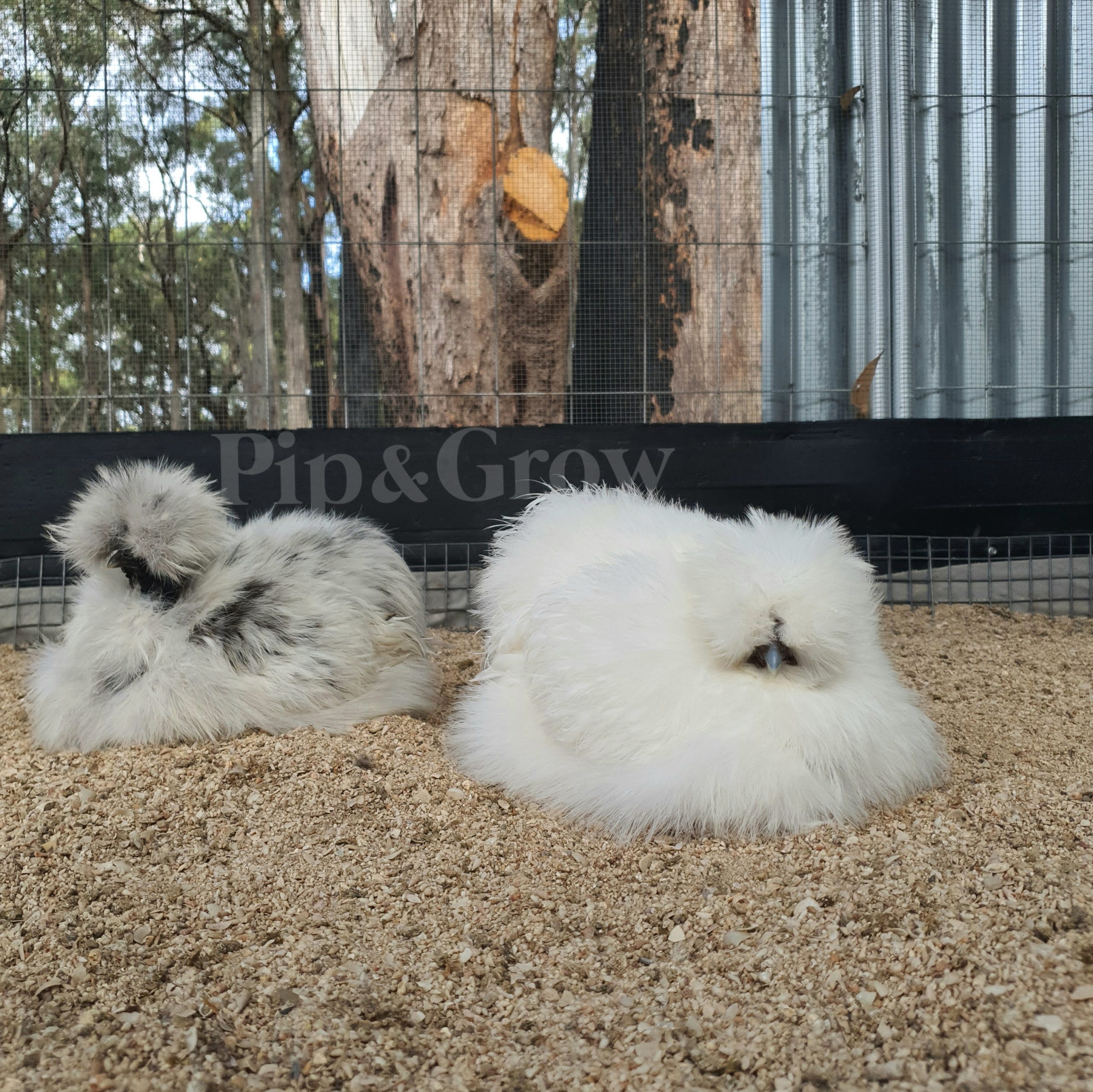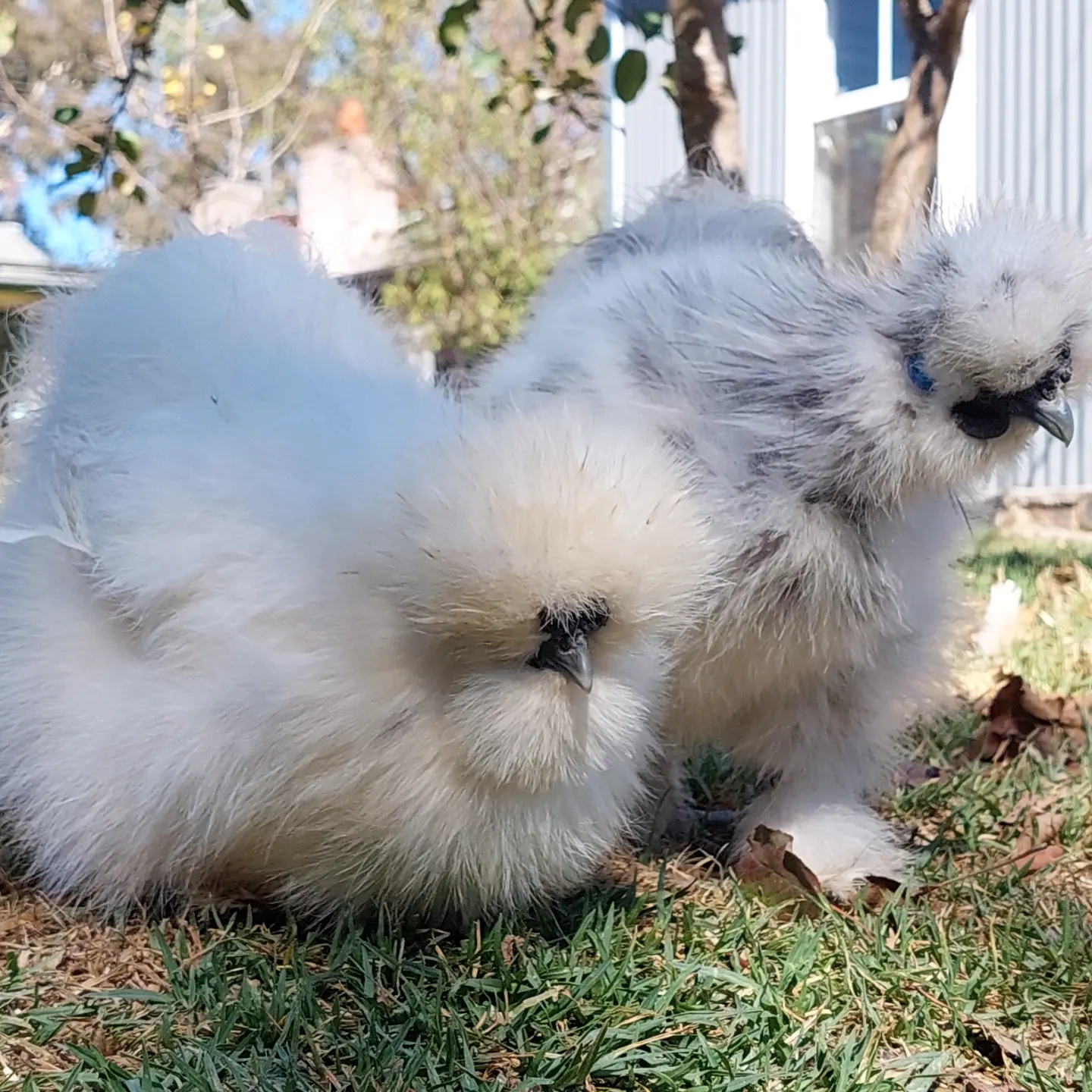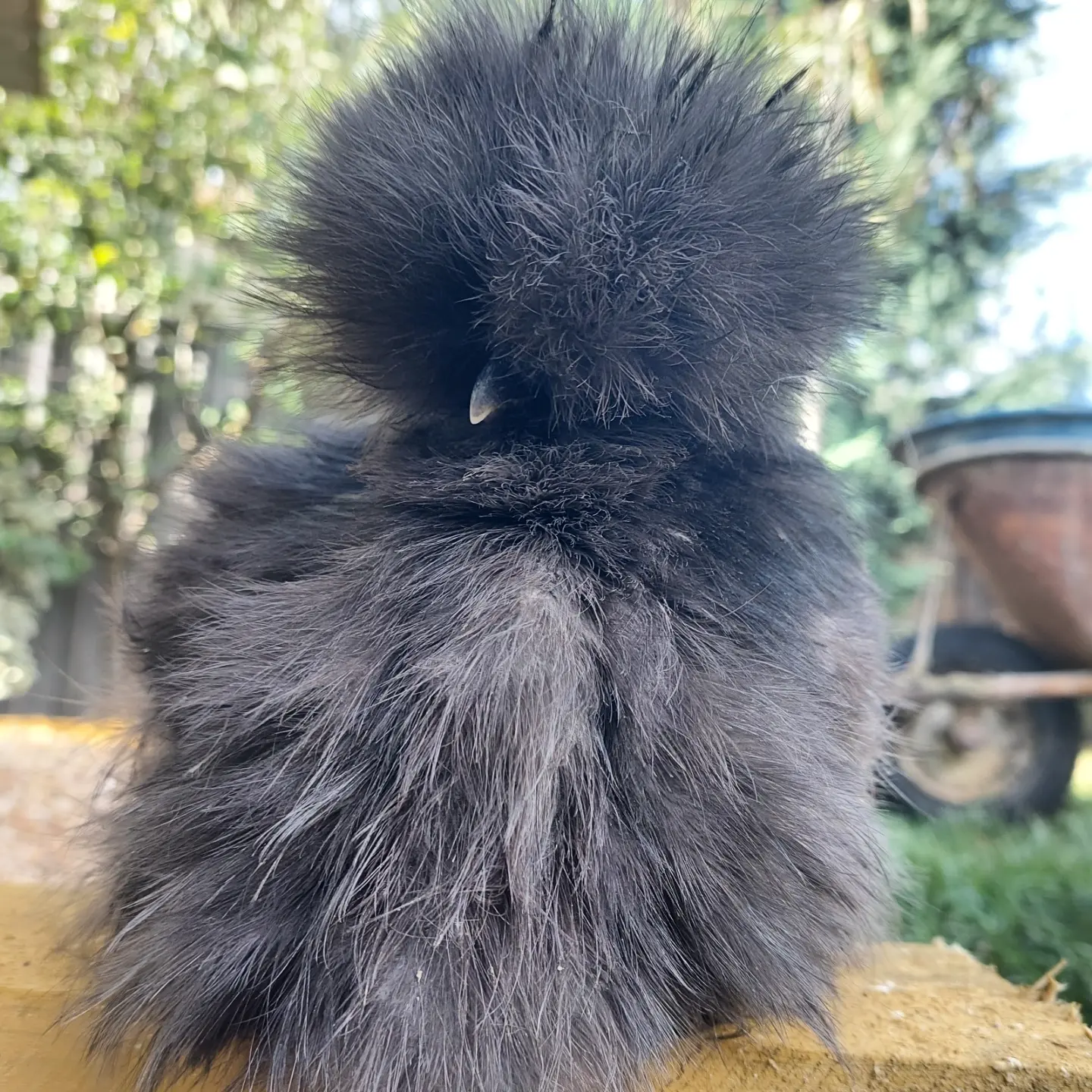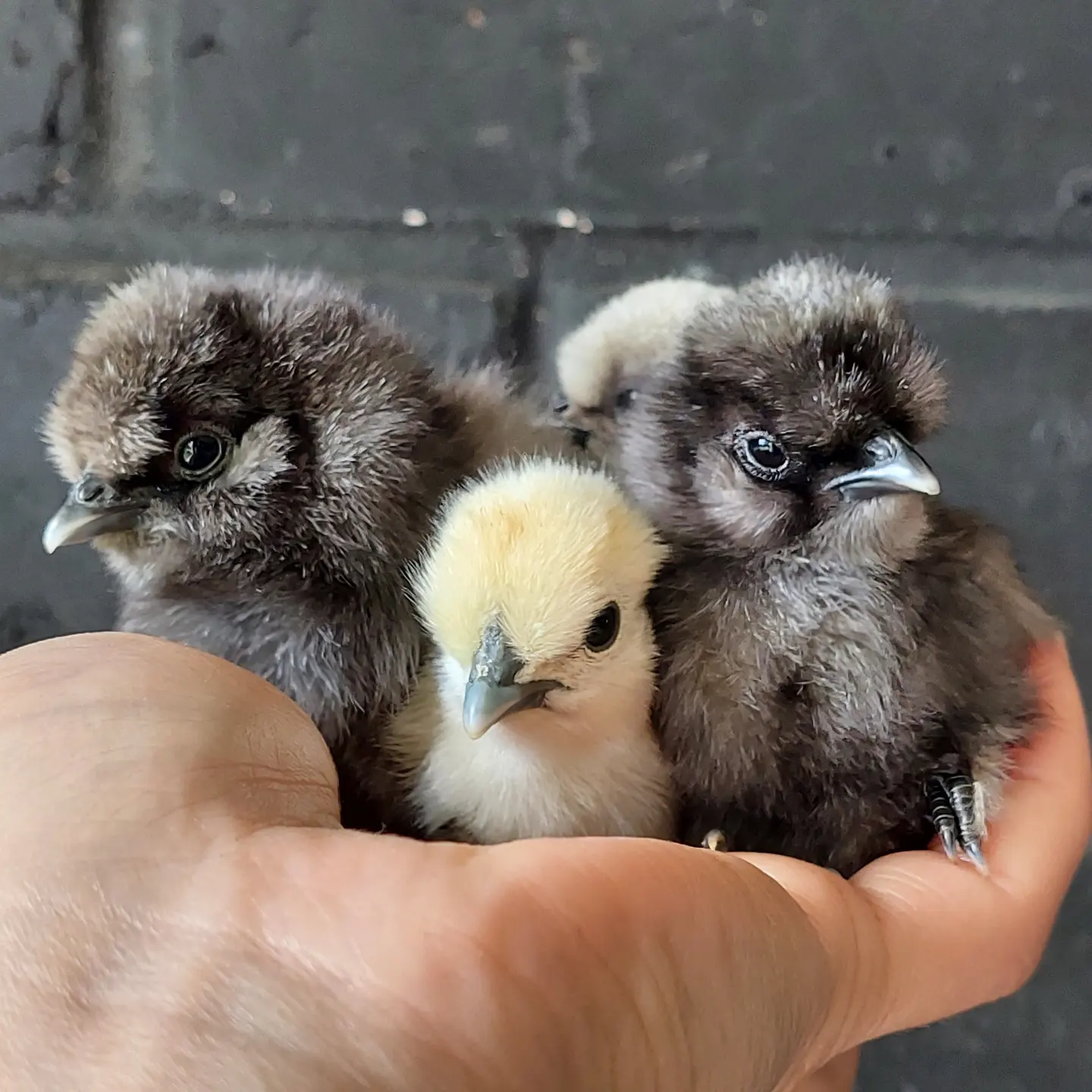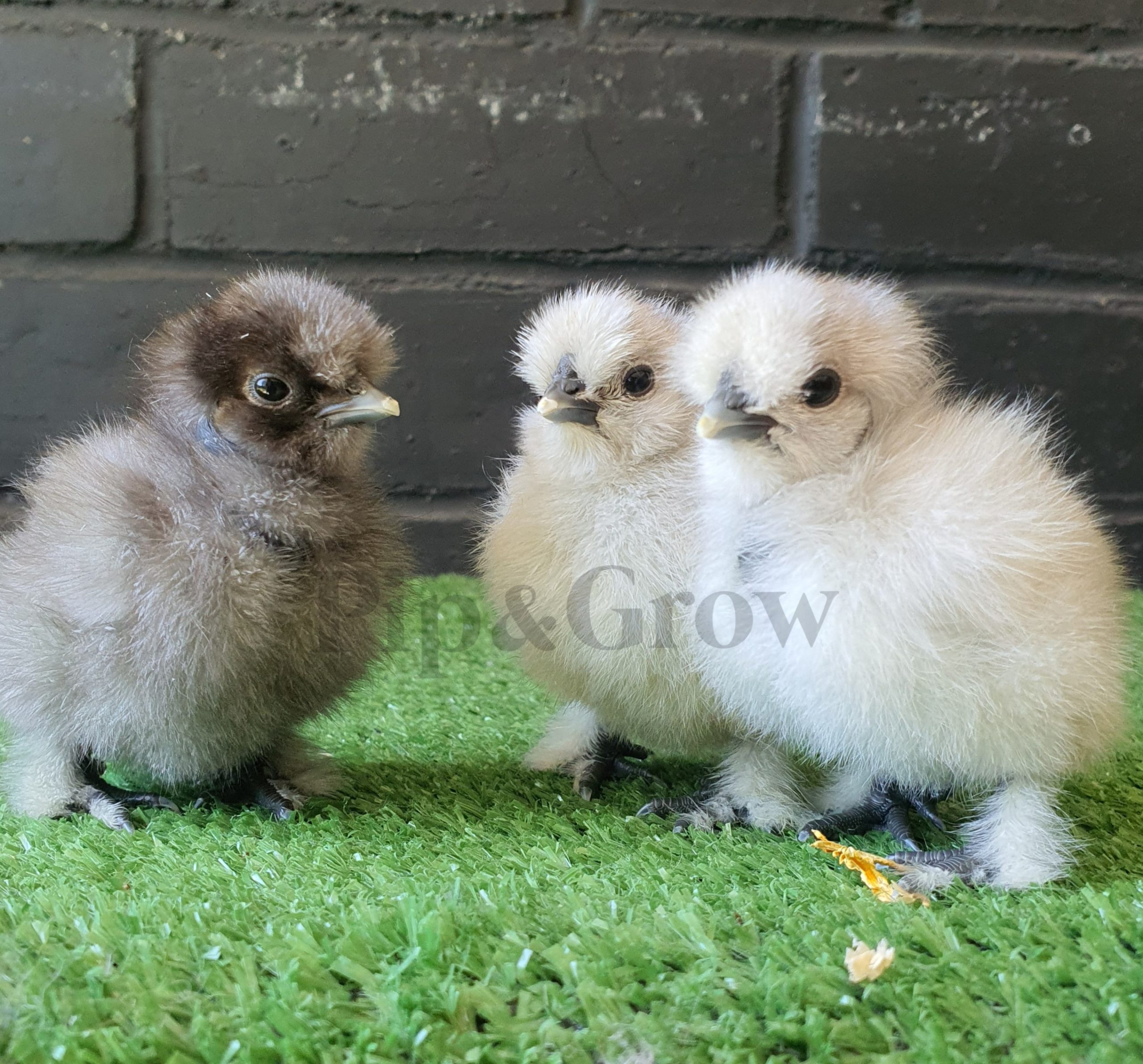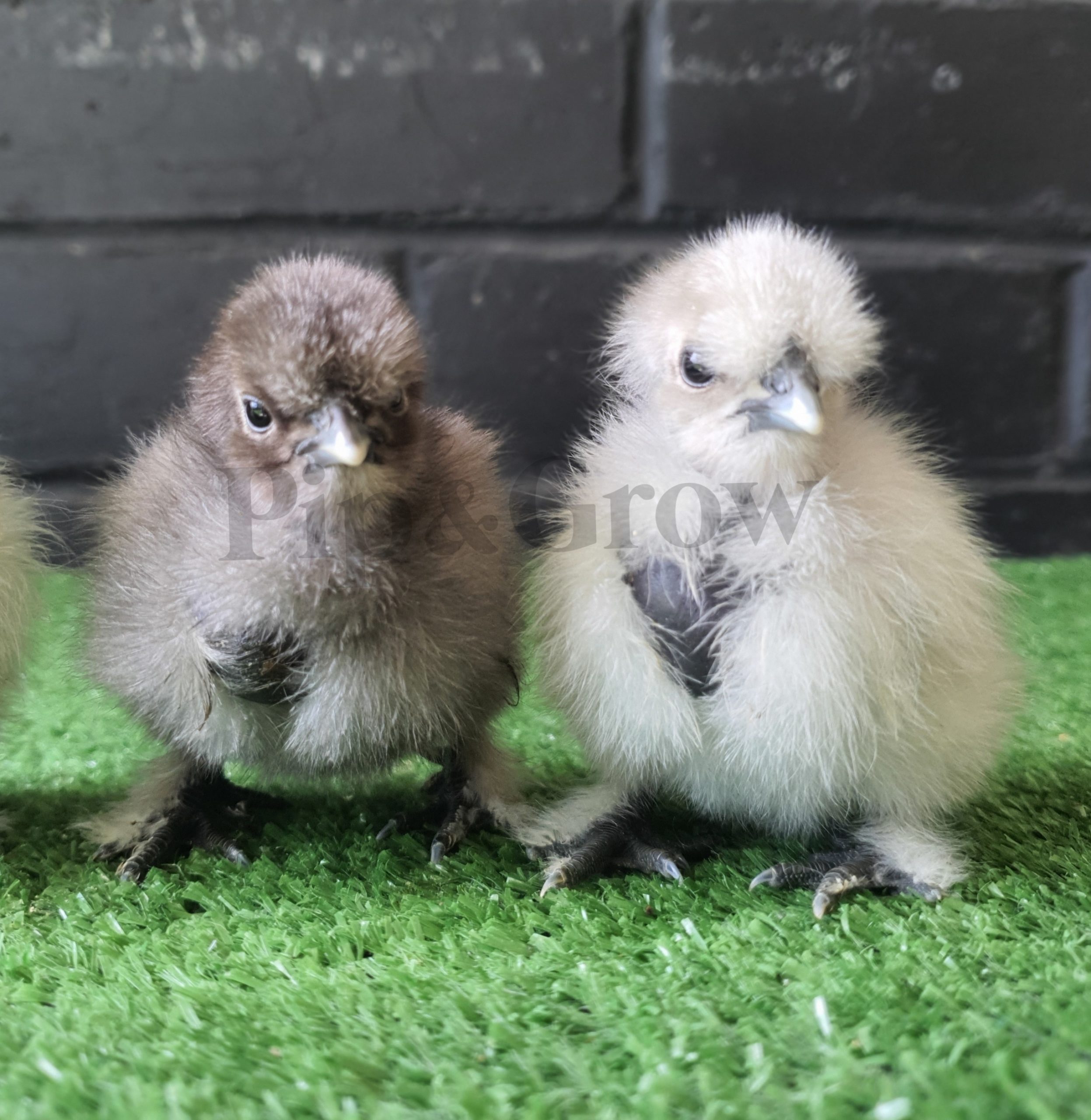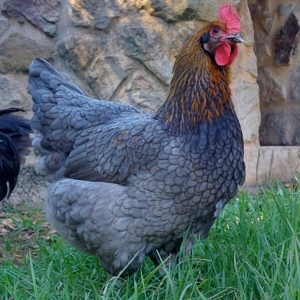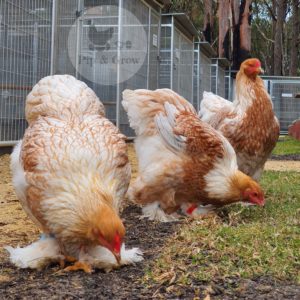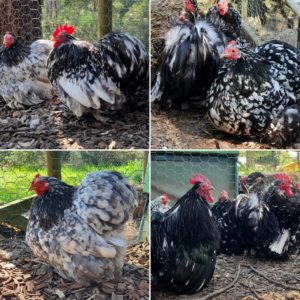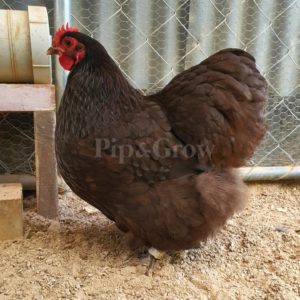Description
- Originated from China
- Mature weight is under 1-1.5kg
- Slow maturing – first eggs around 8 months if not older.
- Small sized cream- brown-white coloured eggs, expected to lay between 100-130 per year.
- Broodiness – High
- Maintenance – medium, some may require more TLC than others
Silkie is a unique and charming breed known for its fluffy plumage, gentle temperament, and distinctive appearance. Originating from China, Silkies have become popular worldwide for their ornamental value and suitability as backyard pets.
Silkies are easily recognizable by their soft, fluffy feathers, which lack the barbicels that typically hold feathers together, giving them a silk-like appearance and texture. They have a small, rounded body with a broad, fluffy crest on top of their head and feathered legs and feet. They come in a variety of colors, including white, black, blue, buff, and partridge, with each color variety adding to their visual appeal. While Silkies are primarily kept for ornamental purposes, they are also valued for their small to medium-sized eggs, which are creamy in color and have a rich flavor. They are not the most prolific layers, but their eggs are prized for their quality.
They are also known for their gentle and docile temperament. They are friendly and sociable birds, making them ideal for families with children and other pets. Silkies are also known to be good mothers, often going broody and raising chicks with care and attentiveness. They are well-suited to small spaces and are hardy in cold climates, although their silked feathers are not waterproof. Therefore, their coop must be sheltered from rain, and the ground should be kept dry to prevent their feathered feet from getting soiled. Occasionally, they may require trimming around the eyes for better vision.
Due to their shy and reserved nature, Silkies often rank low in the pecking order when housed with other breeds. To avoid bullying, it is best not to mix Silkies with other breeds unless all birds were raised together from chicks.
Our journey with Silkies from the very beginning has been an eye-opening experience, as this breed presents numerous unique traits that demand extra attention. From their dark skin and toe separation to the shape, texture, and size of their comb, along with other specific features like horns and feather quality, Silkies require careful consideration and selective breeding. Over the years, we’ve diligently gathered bloodlines while selectively culling to ensure our Silkies maintain good genetic diversity.
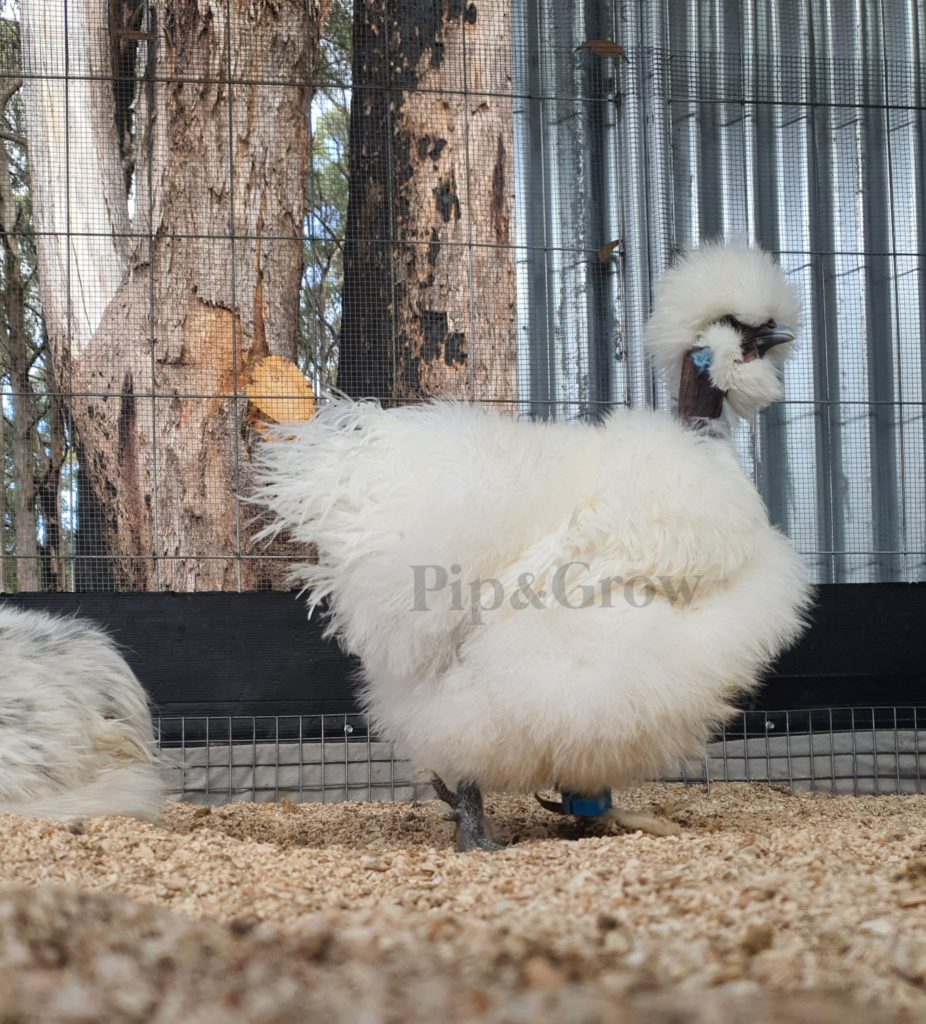
Showgirl type silkies
We have showgirl type breeders in blue, black and splash breeder pen. Showgirl-type Silkies are bred for their unique and cute appearance by crossing a featherless neck breed and then reintroducing Silkies over several generations. Despite their distinctive look, Showgirl-type Silkies retain all typical Silkie traits and characteristics, except for the absence of feathers around the neck, which adds to their charm. Our breeding group will produce a diverse range of offspring. Some will boast beards, while others have smooth, clean necklines. Additionally, you’ll find the bow-tie type with a fringe of feathers around the neck, and the stripper type, which presents a completely featherless neck.
Breeding Showgirl-type Silkies with full Silkies can result in offspring with a 50% chance of inheriting the Showgirl or standard Silkie type. This breeding strategy allows for the continuation of the adorable Showgirl lineage while maintaining the diversity and characteristics of the Silkies.
Please see Silkie – Open Poultry Standard Australia for more info and breed standards.
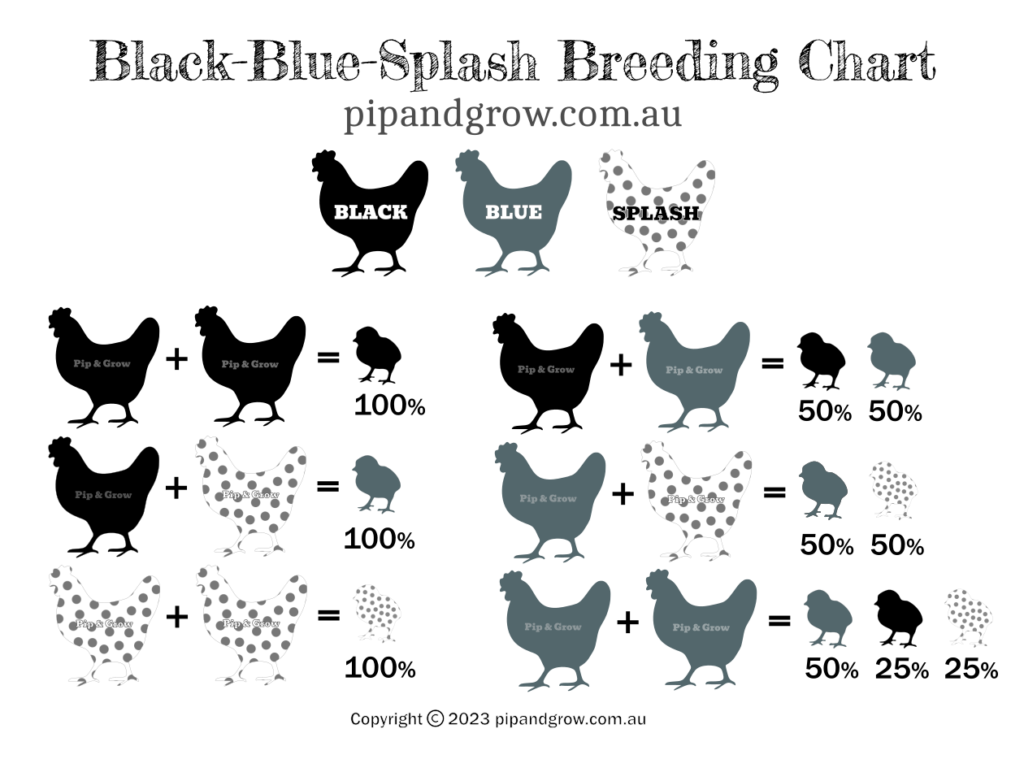
More info found on Breeds – Silkie page
